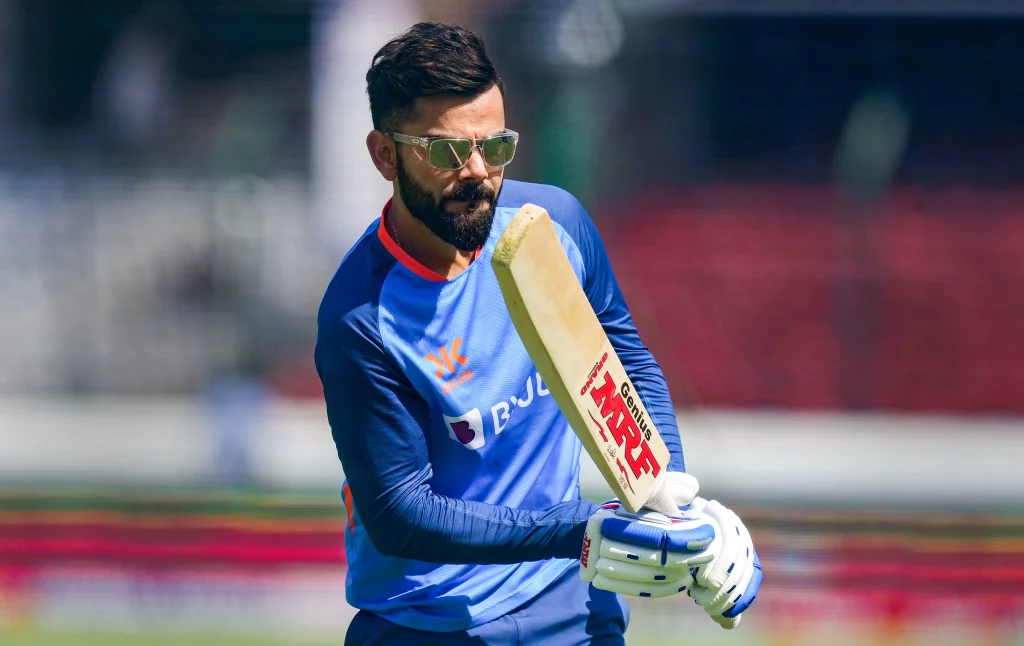The World Cup 2023 will be the last tournament for many a legendary and iconic cricketers. One of them is Virat Kohli.
Virat Kohli is likely to play his last ODI World Cup this year, although with his fitness and zeal, it can’t be ruled out that he could still play in the 2027 World Cup when he will be 38; master blaster Sachin Tendulkar, too, was 38 years old when he played his last World Cup in 2011, and fulfilled his dream.
While Virat Kohli was a young, upcoming superstar when he won the 2011 World Cup, now, a dozen years later, the Delhi cricketer is an attested legend and was voted the Best Men’s ICC Cricketer Of The Decade in 2020 by the ICC.
He played a significant part in India’s 2011 World Cup, but was overshadowed by the other senior players and their contributions. This time, Virat Kohli would want to be the main man as India aspire to end their decade-long ICC title drought.
A major challenge that India are facing at the moment is the vacant number 4 position in the ODI side with injuries to Shreyas Iyer and KL Rahul and the likes of Sanju Samson and Suryakumar Yadav failing to capitalize on their chances.
There is a small, yet possible, chance that India might push either Virat Kohli or Rohit Sharma at the number 4 position. While a move as big as this one this close to the World Cup could backfire, there is also plenty of upside and reasons to do so.
Kohli may have had his success in ODIs in the past decade batting at number 3, but he also has experience of batting at number 4. Memorably, he played at number 4 in the 2011 World Cup, behind Tendulkar, Sehwag, and Gambhir.
Here are 3 reasons why Virat Kohli could bat at number 4 in World Cup 2023:
Playing an experienced player at number 4 is better than playing an inexperienced batter
Nobody has played more ODI matches than Virat Kohli’s 275 ODi in this Indian team. The argument here is that it would be better to play the most experienced man in the side at a position in the middle-order where India might play someone as inexperienced as Iyer, Samson, or Suryakumar. If Iyer isn’t fit or doesn’t get his form back on his return, then Samson, SKY, and Tilak Varma are other options – all of them inexperienced in ODI cricket.
We saw what happened when India played an inexperienced Rishabh Pant at number 4 in the 2019 World Cup semi-final. Number 4 is an important position, possibly even tougher to ace than number 3 because at 4 you don’t get the cushion of the powerplay field restrictions. Having a vastly experienced batsman at number 4 would be a better bet than an inexperienced one.
Virat Kohli can plan his innings at number 4 similar to number 3
Kohli is arguably the greatest run-chaser in the history of ODI cricket: he averages 64 in run-chases and an unbelievable 89 in successful run-chases. Nobody perhaps plans an innings in ODI better than Virat Kohli.
It wouldn’t be a problem for him to chart out an innings, especially a run-chase, for Kohli batting at number 4 any different than he does at number 3.
Batting at number 4 would shield Virat Kohli from the new ball against pacers
Another key reason why we vehemently believe Virat Kohli should bat at number 4, instead of number 3 in the World Cup 2023 is that it would shield him from the new ball from the pacers.
Two moments still haunt Indian cricket fans: Mohammed Amir toppling India’s top-order in the 2017 Champions Trophy final, and Boult and Henry doing the same in the 2019 World Cup semi-final, where India were 5/3. These pacers made full use of the new-ball movement and crashed India’s potential party on those days.
Virat Kohli got out for cheap scores, and in both games he was dismissed by left-arm pacers swinging the new ball.
Batting at number 4 would give a better chance to not face those pacers when they are on song, especially in a knockout games. This would keep India’s best and most experienced batsman in the middle when the new ball loses its shine and it’s time to cash-in on the fielders pushed back in the deep after the first powerplay.

